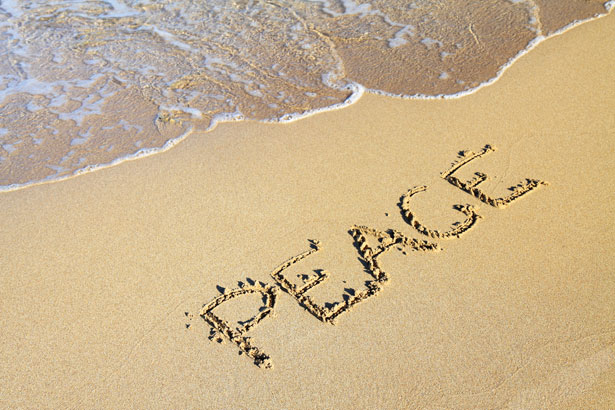Although this post is a bit of a departure from the norm on my blog, recent circumstances and an increasing awareness of the prevalence of this wide-spread problem have prompted me to speak out.
When can a family be called dysfunctional?
According to this web-page in Psychology Encyclopedia: “A family whose interrelationships serve to detract from, rather than promote, the emotional and physical health and well-being of its members.”
A family can be considered dysfunctional if they are living with conditions that interfere with healthy family functioning. Most families do have some periods of time where functioning is impaired by stressful circumstances (death in the family, divorce, a parent’s serious illness, etc.). But, healthy families tend to return to normal functioning after any of these crisis pass. In dysfunctional families, however, problems tend to be chronic and children do not consistently get their emotional/mental or even physical needs met. Negative patterns of parental behavior tend to be dominant in their children’s lives and the children reflect this, often carried to an extreme.
How do healthy families function?
A powerful quote by psychologist Elvira Avetta Ph.d.: “Respect is the Holy Grail of functional families. All people in the family, brothers to sisters, mothers to fathers, parents to kids must be respectful as consistently as possible. Being considerate of each other is the tie that binds, even more than love. I think too much emphasis is put on love in general. I’ve heard of many atrocities done within families in the name of love but never in the name of respect. Just about all the things on the list come out of respect first.”
Healthy families are not perfect by any means; they may have occasional bouts of yelling, bickering, misunderstanding, tension, hurt, and anger; but only a fraction of the time they spend together. In healthy families emotional expression is allowed and accepted, even encouraged if there are no harmful intentions. Family members will freely ask for and give attention. Rules and expectations tend to be made explicit and remain consistent, but not entirely uncompromising or rigid allowing for some flexibility to adapt to individual needs and particular situations. Healthy families allow for individuality; each member is encouraged to pursue his or her own interests, and boundaries between individuals are honored.
- *Children are consistently treated with respect, and do not fear emotional, verbal, physical, or sexual abuse.
- *Parents can be counted on to provide sufficient care for their children. Children are given responsibilities appropriate to their age but are not expected to take on the weight of parental responsibilities.
- *Finally, in healthy families everyone makes mistakes; mistakes are allowed. Perfection is unattainable, unrealistic, and potentially dull and sterile.
Types of dysfunction
Kansas State University’s Counseling Services web-page claims: “There are many types of dysfunction in families. Some parents “under-function,” leaving their children to fend for themselves. Other parents “over-function;” never allowing their children to grow up and be on their own, or learn to accept responsibility for themselves and their actions. Other parents are inconsistent or violate basic boundaries of appropriate behavior.”
There are also many other influencing factors that may need to be considered, to many to cover here. Parents need to realize how greatly they affect their children’s behavior. Children are like sponges; they soak up everything a parent does and model or incorporate what they see into their own lives, sometime to the point of acting it out.
Children of Parents that are separated/divorcing/divorced…
When parents are separated or divorced there’s a new set of challenges for the child. It is extremely important that both parents are on the same page as far as setting the right examples for their child or children; in spite of their personal estrangement from each other. Negative examples will most likely be detrimental to a child’s development and more often than not will lead to bad behavior.
“In the best interest of the child” is the cornerstone of family law in most of North America. This basic principle (with very few exceptions) insists that children benefit from the continued involvement of both their mothers and fathers after separation or divorce. The problem is, there are parents no longer “together” that not only don’t have their children’s best interests at heart, but rather have an overwhelming urge to “get back” at their ex, or ex-to-be spouse; and sadly they’ll use their own children to do it. And they do this by demanding huge amounts of support (financial and otherwise), using the children as pawns, airing their complaints via social media, disparaging the “other”, and playing games with access to the child. Some go so far as to inflict damage through parental alienation or go the other extreme, parental abduction of the child/children; both of which are a type of vigilante justice.
What separating parents don’t seem to realize is there are very real consequences of dysfunctional divorce or separation that affects the mental, emotional, and developmental well-being and behavior of the child. Additionally; the effects of divorce trauma becomes more pronounced the longer the proceedings drag on. And to a small child, two, three or five years in their life is a huge percentage of time.
How does divorce/separation trauma affect children?
Penelope Leach, A leading parenting guru and author of the comprehensive international bestseller “Your Baby and Child” says: “Children are being used as weapons in the marital war when actually they are its victims.”
Children have been known to suffer a wide range of dysfunctional behaviors including aggressiveness, fighting, hostility, anxiety, depression, hyperactivity, loneliness, and self-esteem issues. In preschoolers these behaviors often lead to frequent illnesses, severe shyness, low self-esteem, hitting, biting, trouble in pre-school or daycare. Later on this can develop into to even more serious problems, such as stealing, lying, nightmares, eating problems, self-harm, bedwetting, poor school results, being ‘too perfect’, drug and/or alcohol abuse. If these patterns persist into adulthood, victims may find themselves crippled in their ability to have trusting, productive, relationships with family, friends or the community at large.
Parents can work together to resolve many of these issues. If disagreements and arguing among parents is done fairly and with maturity, a child can actually benefit from seeing how conflicts are peacefully resolved. Verbally aggressive, threatening, intimidating fights are extremely hard on developing children. They tend to blame themselves for their parents’ arguments and as a result may be traumatized for years to come. These children commonly develop low self-esteems and may even behave violently toward other children or adults. Dysfunctional families breed dysfunctional children that often repeat the behavior learned in their future relationships.
*Rae Indigo is ERYT500

 As humans our bodies have preconditioned responses to threats and/or challenges, whether they’re real or perceived, anything from the attack of a tiger to hostile words from a coworker tends to prompt the “fight or flight” reaction. This automatic response triggers the production and release of adrenaline and cortisol into our bloodstreams. Unless we are confronted with an actual physical attack (in which case we need to fight or run away), the fight or flight response can itself be physically harmful and literally cause pain and suffering. If this response arises without real situations, we tend to succumb to a series of conditioned or habitual responses. In our relationships with each other, we may see the other person as our enemy and fail to recognize that they may be facing their own set of fears and challenges.
As humans our bodies have preconditioned responses to threats and/or challenges, whether they’re real or perceived, anything from the attack of a tiger to hostile words from a coworker tends to prompt the “fight or flight” reaction. This automatic response triggers the production and release of adrenaline and cortisol into our bloodstreams. Unless we are confronted with an actual physical attack (in which case we need to fight or run away), the fight or flight response can itself be physically harmful and literally cause pain and suffering. If this response arises without real situations, we tend to succumb to a series of conditioned or habitual responses. In our relationships with each other, we may see the other person as our enemy and fail to recognize that they may be facing their own set of fears and challenges.
 Who doesn’t sometimes feel like they’re up one day and down the next; whether it’s trying to keep your personal and family life on an even keel, dealing with financial issues in a tough economy or even dealing with the current social/political climate, it often seems like we’re on a wild ride. All of us experience challenges and develop all sorts of worries and concerns in the course of our lives, and in today’s hectic world it may feel like it takes the strength of Hercules to navigate the complexities of our technologically-advanced, humanistic and existentially-struggling culture.
Who doesn’t sometimes feel like they’re up one day and down the next; whether it’s trying to keep your personal and family life on an even keel, dealing with financial issues in a tough economy or even dealing with the current social/political climate, it often seems like we’re on a wild ride. All of us experience challenges and develop all sorts of worries and concerns in the course of our lives, and in today’s hectic world it may feel like it takes the strength of Hercules to navigate the complexities of our technologically-advanced, humanistic and existentially-struggling culture.